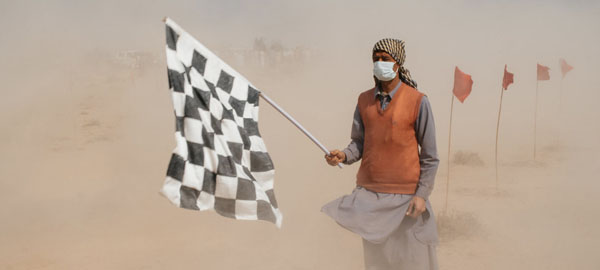At first glance, Multan is like any other middling-to-large provincial city in Pakistan; an unkempt sprawl of grey concrete buildings and chaotic traffic. However, beneath the gruff exterior lies a city steeped in history and heritage.
Conquered by Alexander the Great and ruled for a time by the Brahmin Dynasty, Multan eventually came to be one of the sub-continent’s chief centres of Islam. Through the centuries, scores of mystics, holy men and spiritualists have journeyed there in search of enlightenment. Though many of its ancient religious sites are lost to posterity, enough remains for it to still be known as the ‘City of Saints’.
I was lucky enough to finally visit Multan earlier this year.
The first morning was spent at the Institute of Blue Pottery, to see craftsman work on one of Multan’s most important cultural traditions. The art of indigenous pottery making is a centuries old practice hallmarked by the blue and turquoise hues that give the craft its name. As it was a Friday, the institute was only semi-operational, but we still managed to obtain a limited tour during which we saw students paint vases at a training workshop.
In the afternoon, as the metropolis heaved back to life after the Juma prayers we made our way to the city’s most iconic heritage sites. The mausoleums of Baha-ud-Din Zakaria and Shah Rukn-e-Alam are situated in close proximity to each to other on the mound which juts out of the old fort area of the city. Beautifully constructed of red-brick and timber they are the resting places of the renowned Sufi saints, Baha-ud-Din Zakaria and his grandson Sheikh Rukn-ud-Din Abul Fath. Both saints are still held in great reverence and every year over 100,000 visitors make the pilgrimage to their tombs from all over South-Asia. As such they have become the defining image of Multan and the heart and soul of its cultural life.
With the break of dawn the following day, we left the city and headed down to GT Road towards the Cholistan desert for the annual jeep rally. Started in 2005 by the Tourism Development Corporation of Punjab, the off-road event has proved to be an incredible success and draws thousands of visitors every year. Despite only being able to attend the qualifying sessions, and not the race itself, it was an exhilarating experience and one that will linger long in the memory.
Looking back now, it was in many ways a fragmented trip, with so much of it only half-complete. I hope to return in the winter months for a fuller experience. For now though here is a disparate collection of pictures I was able to capture during my stay. They are a small glimpse into one of the most culturally vivid parts of Pakistan. The hope is that next time there will be so much more.
Published first on: Usman-Ahmad.com

